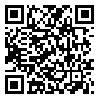Volume 64, Issue 12 (6 2006)
Tehran Univ Med J 2006, 64(12): 17-22 |
Back to browse issues page
Download citation:
BibTeX | RIS | EndNote | Medlars | ProCite | Reference Manager | RefWorks
Send citation to:



BibTeX | RIS | EndNote | Medlars | ProCite | Reference Manager | RefWorks
Send citation to:
Sabzevari O, Daliraj A, Mohammadi M, Rastegar H. Identification and determination of erucic acid in infant formula using Gas Chromatography. Tehran Univ Med J 2006; 64 (12) :17-22
URL: http://tumj.tums.ac.ir/article-1-855-en.html
URL: http://tumj.tums.ac.ir/article-1-855-en.html
Abstract: (8189 Views)
Background: Infant formula, depending on the source, contains various fatty acids, which may possess important nutritional and biological value for infants. The presence of some of these fatty acids in infant formula, however, can be harmful and toxic for the infant. In this regard, more attention has been paid to erucic acid since its accumulation in myocardial tissues may cause damage to the heart. Therefore, a limit has been set by the Codex Alimentarius for the presence of erucic acid in infant formula (less than 1% of total fatty acids). The purpose of the present study is to investigate amount of erucic acid present in three infant formulas used predominantly in Iran.
Methods: Gas chromatography (GC) is a valuable method applied for the separation of fatty acids, including erucic acid, from oils and oily food. Three brands of infant formulas, namely Humana, Biomil and Multi, were analyzed by GC using a wall coated open tubular (WCOT) fused silica column and flame ionization detector (FID). Heneicosanoic acid was employed as an internal standard.
Results: The findings showed that Humana and Biomil infant formula samples contained 0.06% and 0.002% erucic acid (from total fatty acids), respectively, while no erucic acid was detected in the Multi infant formula samples.
Conclusion: The amount of erucic acid in the studied infant formulas was far below the Codex limit of 1% total fatty acids.
Methods: Gas chromatography (GC) is a valuable method applied for the separation of fatty acids, including erucic acid, from oils and oily food. Three brands of infant formulas, namely Humana, Biomil and Multi, were analyzed by GC using a wall coated open tubular (WCOT) fused silica column and flame ionization detector (FID). Heneicosanoic acid was employed as an internal standard.
Results: The findings showed that Humana and Biomil infant formula samples contained 0.06% and 0.002% erucic acid (from total fatty acids), respectively, while no erucic acid was detected in the Multi infant formula samples.
Conclusion: The amount of erucic acid in the studied infant formulas was far below the Codex limit of 1% total fatty acids.
| Rights and permissions | |
 |
This work is licensed under a Creative Commons Attribution-NonCommercial 4.0 International License. |





